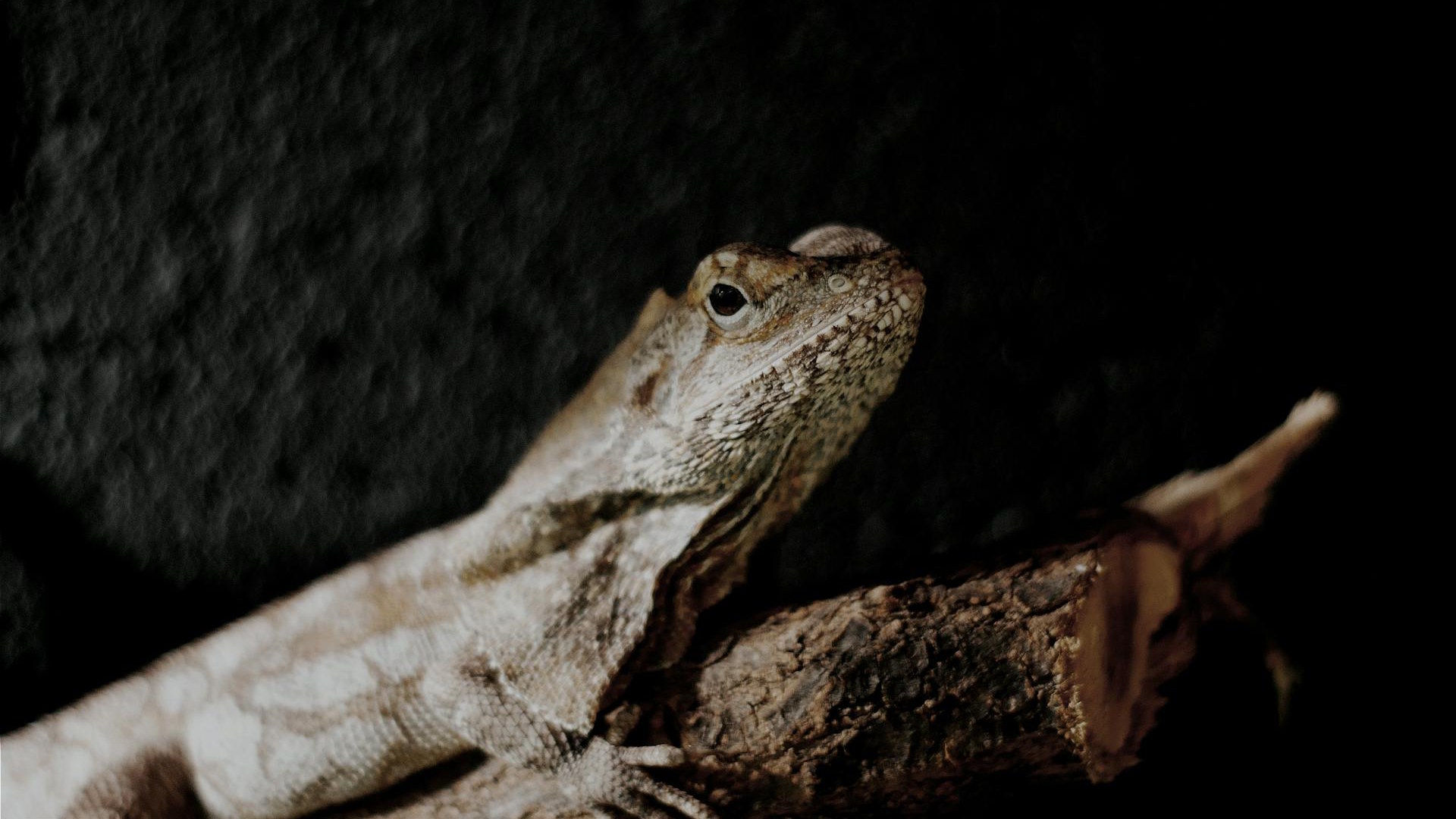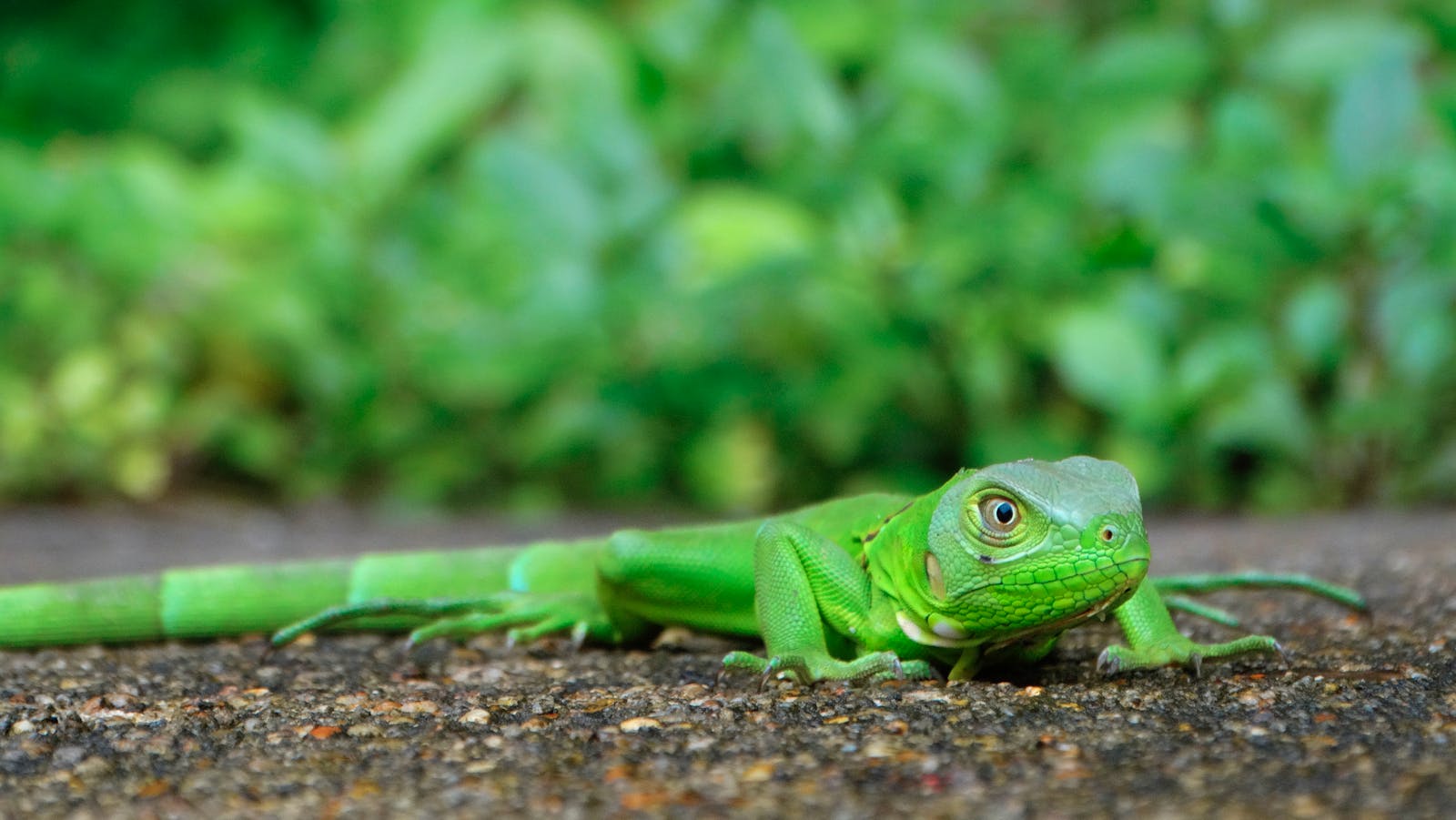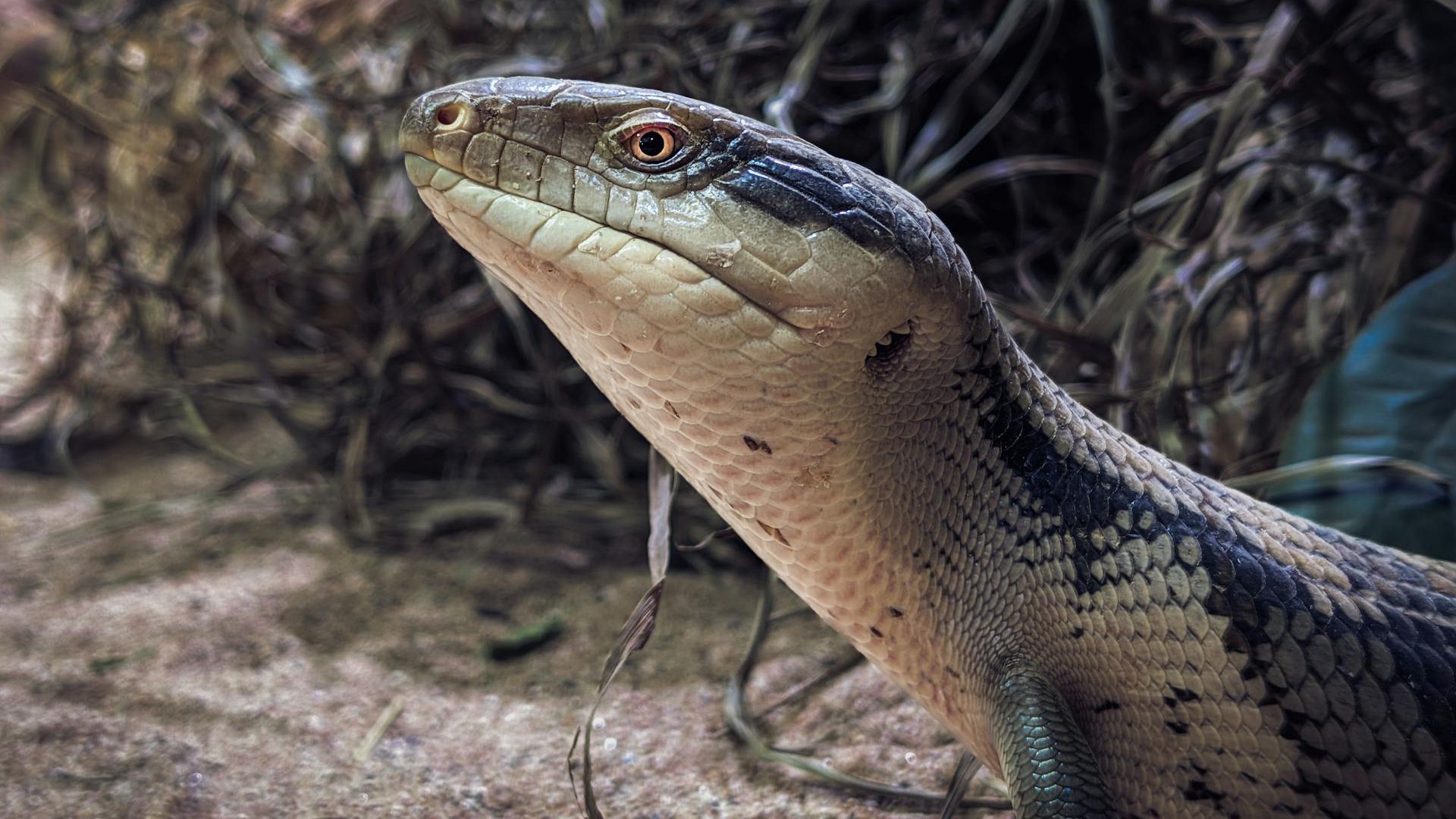Ever watched a lizard dramatically fan out a colorful collar of skin around its neck, transforming from an ordinary reptile into something resembling a prehistoric creature? This remarkable feature, most famously displayed by the frilled-neck lizard of Australia, isn’t just for show. The elaborate neck frills found on certain lizard species represent millions of years of evolutionary adaptation, serving critical functions from survival to reproduction. These fascinating structures have captured human imagination for centuries and continue to intrigue scientists studying animal adaptations. Let’s explore the fascinating world of frilled lizards and discover why these remarkable creatures developed such distinctive anatomical features.
The Anatomy of Lizard Frills
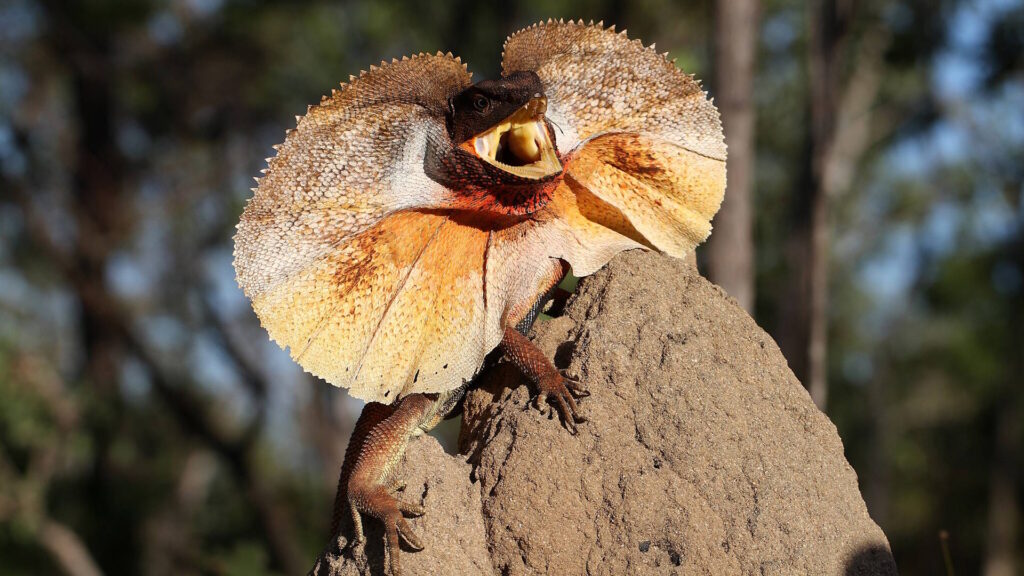
Lizard frills, technically called “dewlaps” or “throat fans” in many species, consist of loose folds of skin supported by elongated cartilaginous structures that extend from the hyoid apparatus (throat bones). In the classic example of the Australian frilled-neck lizard (Chlamydosaurus kingii), the frill contains rod-like cartilage extensions from the hyoid bone, connected by an extensive membrane of skin that can spread outward when deployed. When not in use, the frill folds neatly against the lizard’s neck and shoulders, appearing almost invisible to casual observers. The frill’s size can be impressive, expanding up to three times the width of the lizard’s head when fully extended, creating a dramatic transformation in the animal’s appearance. The structure’s complexity allows for rapid deployment and retraction, essential for its various survival functions.
Predator Deterrence: The Primary Function
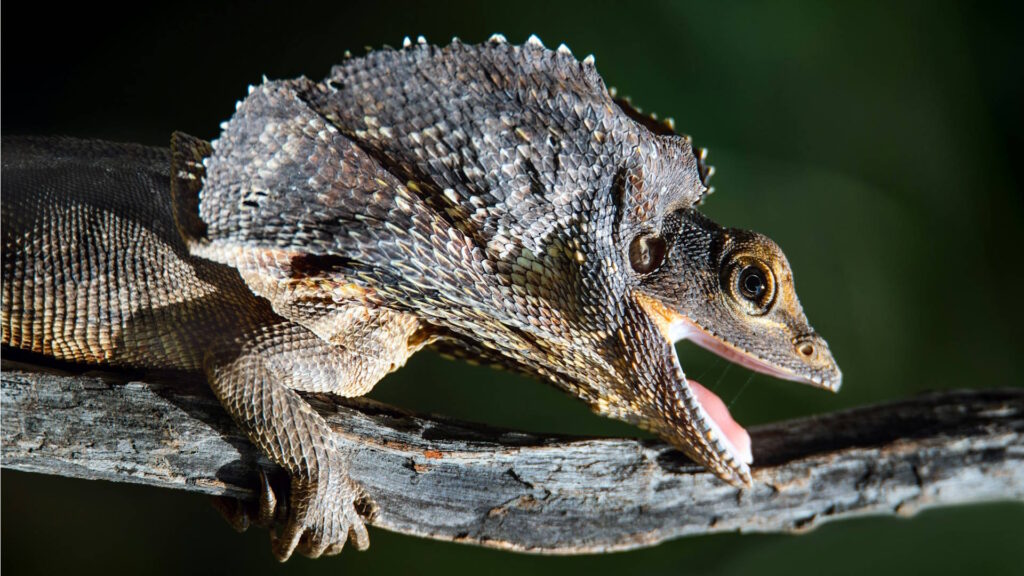
The most critical function of the frill is defense against predators through a strategy known as threat display or deimatic behavior. When a frilled lizard feels threatened, it opens its mouth wide, extends its frill in a dramatic display, hisses loudly, and may even stand on its hind legs to appear larger and more intimidating. This sudden transformation can startle potential predators like snakes, birds of prey, and dingoes, giving the lizard precious seconds to escape. Research has demonstrated that this strategy is remarkably effective, as many predators instinctively hesitate when confronted with a sudden change in their prey’s appearance and size. The colorful patterns on the inside of some frills, often featuring bright warning colors like red or yellow, further enhance this deterrent effect. For a small lizard with few physical defenses, this psychological warfare provides a crucial survival advantage in environments with numerous predators.
Thermoregulation Benefits
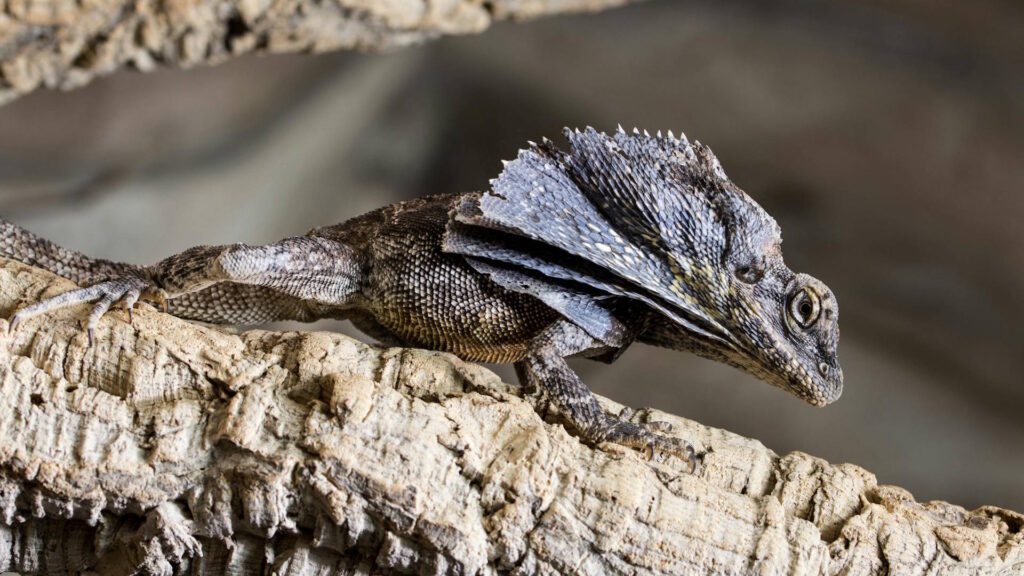
Beyond defense, the frill serves an important physiological function related to temperature regulation. As ectothermic animals, lizards rely on external heat sources to regulate their body temperature, and the frill provides additional surface area for heat exchange with the environment. By extending the frill and positioning it toward the sun, lizards can increase the area available for absorbing solar radiation, helping them warm up more quickly in the morning or after cool periods. Conversely, in extreme heat, the highly vascularized frill tissue can help dissipate excess body heat when properly positioned in shade or breeze. This thermoregulatory function is particularly valuable in the hot, arid Australian environments where frilled lizards naturally occur, where daily temperature fluctuations can be extreme. Some researchers believe this thermoregulatory role may have been an early evolutionary driver for frill development, with defensive functions evolving later.
Sexual Selection and Reproduction
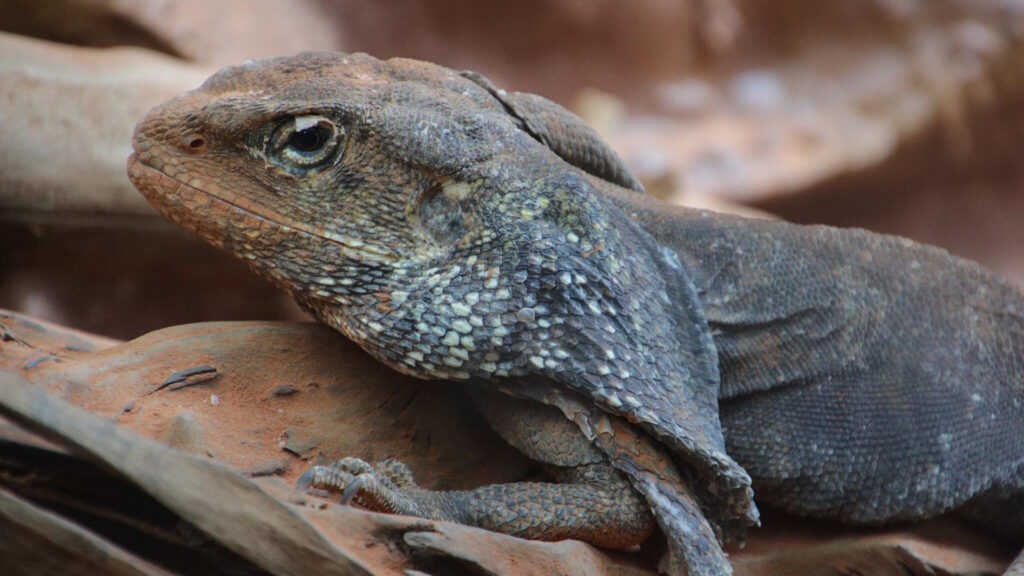
The frill plays a significant role in the reproductive strategies of many lizard species, functioning as a visual signal during courtship displays and territorial competitions. Male frilled lizards often engage in competitive displays where they extend their frills toward rival males, with the larger, more colorful frill typically indicating a stronger, healthier individual. These displays can help establish dominance hierarchies and territory boundaries without requiring physically dangerous fights. During courtship, males display their frills to potential mates, with females showing preference for males with larger, more vibrantly colored frills that may indicate genetic fitness. Research has shown that the size, color intensity, and symmetry of frills can directly influence mating success, making the frill a classic example of a sexually selected trait. This sexual selection pressure has likely contributed significantly to the evolution and maintenance of elaborate frills in certain lizard populations.
Species With Frills: Beyond the Australian Icon
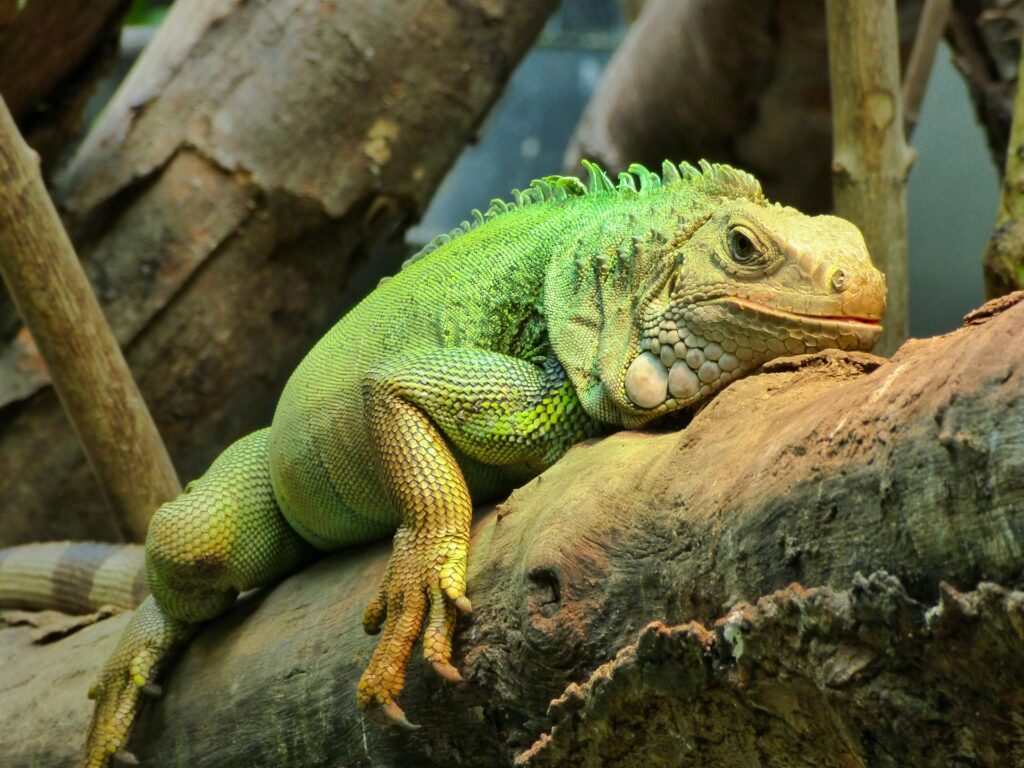
While the Australian frilled-neck lizard represents the most dramatic example of neck frills, several other lizard species have evolved similar structures independently. The green iguana (Iguana iguana) sports a modest throat fan that inflates during territorial disputes and courtship displays. Similarly, many species of anoles possess colorful dewlaps that extend from their throats for communication and display. The sail-finned dragon (Hydrosaurus pustulatus) features a remarkable sail-like crest that runs along its back and tail, serving similar functions to the neck frill. These examples of convergent evolution demonstrate how different lizard lineages have independently evolved comparable structures to serve similar ecological and reproductive functions. The varying sizes and designs of these structures across species reflect the specific environmental pressures and communication needs of each species’ habitat and lifestyle.
The Evolutionary Development of Frills
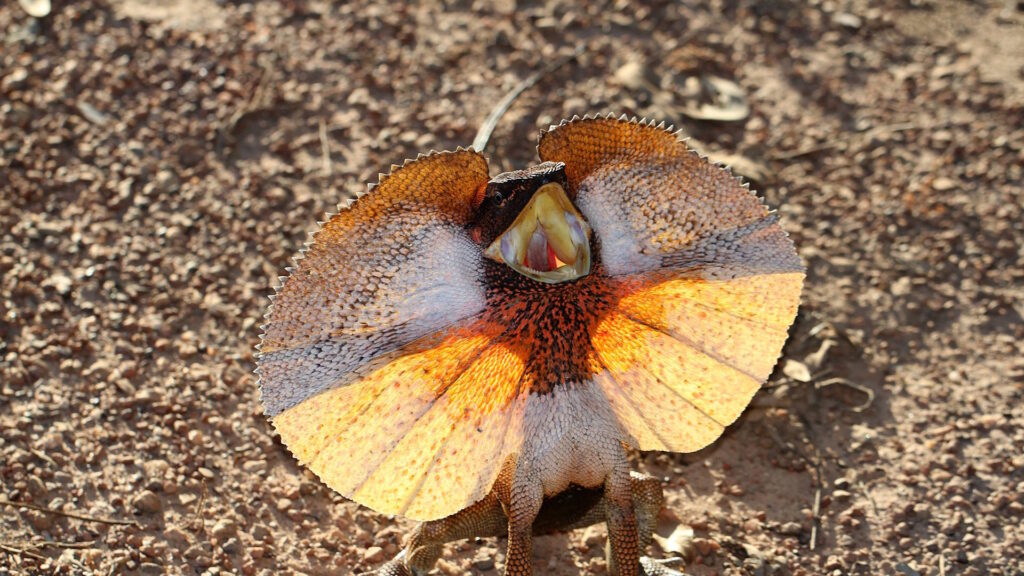
The evolutionary history of lizard frills represents a fascinating study in natural selection and adaptive radiation. Paleontological evidence suggests that the basic structures enabling frill development evolved millions of years ago, with the modern Australian frilled lizard representing a highly specialized endpoint of this evolutionary path. The development of the frill likely began with small throat pouches that provided minor thermoregulatory benefits, gradually expanding over generations through positive selection as individuals with larger displays gained advantages in both survival and reproduction. Genetic studies have identified several genes responsible for the development of the cartilage structures supporting the frill, including sonic hedgehog (SHH) and bone morphogenetic proteins (BMPs) that regulate growth patterns during embryonic development. The complex coordination of muscle development, nerve innervation, and blood vessel formation necessary for a functional frill underscores the remarkable process of evolutionary development. This evolutionary story demonstrates how relatively simple anatomical features can develop into complex, multi-purpose adaptations over time.
The Biomechanics of Frill Deployment

The mechanics behind the rapid deployment of the frill involve a sophisticated system of muscles, cartilage, and connective tissues working in precise coordination. When threatened, specialized muscles connected to the hyoid apparatus contract, pushing the cartilaginous rods outward and causing the connected skin membrane to unfold and expand dramatically. This deployment happens in fractions of a second, providing the element of surprise essential for startling predators. The structure maintains rigidity when extended through a combination of tensioned cartilage and muscle control, creating an imposing visual display. When the threat passes, different muscle groups contract to fold the structure back against the neck in an equally efficient manner. High-speed video analysis has revealed the remarkable precision of this movement, with the entire extension-retraction cycle demonstrating biomechanical efficiency honed through millions of years of evolution. The energy efficiency of this system is particularly noteworthy, allowing for repeated displays without significant metabolic cost to the lizard.
Cultural Significance and Human Fascination

Frilled lizards have captured human imagination across cultures and through history, featuring prominently in the folklore of indigenous Australian peoples who recognized these distinctive creatures in their stories and art. The lizard’s dramatic defensive display has made it an icon of Australian wildlife, appearing on postage stamps, coins, and as mascots for various organizations. In popular culture, the frilled lizard gained worldwide fame through its appearance in the 1993 film “Jurassic Park,” where the fictional Dilophosaurus was portrayed with a neck frill inspired by Chlamydosaurus kingii (though no evidence suggests the dinosaur actually had such a feature). This cultural prominence has helped raise awareness about these unique reptiles and their conservation needs. Modern wildlife documentaries frequently feature the frilled lizard’s defensive display as a dramatic example of animal adaptation, further cementing its place in public consciousness and environmental education efforts.
Environmental Adaptations and Habitat
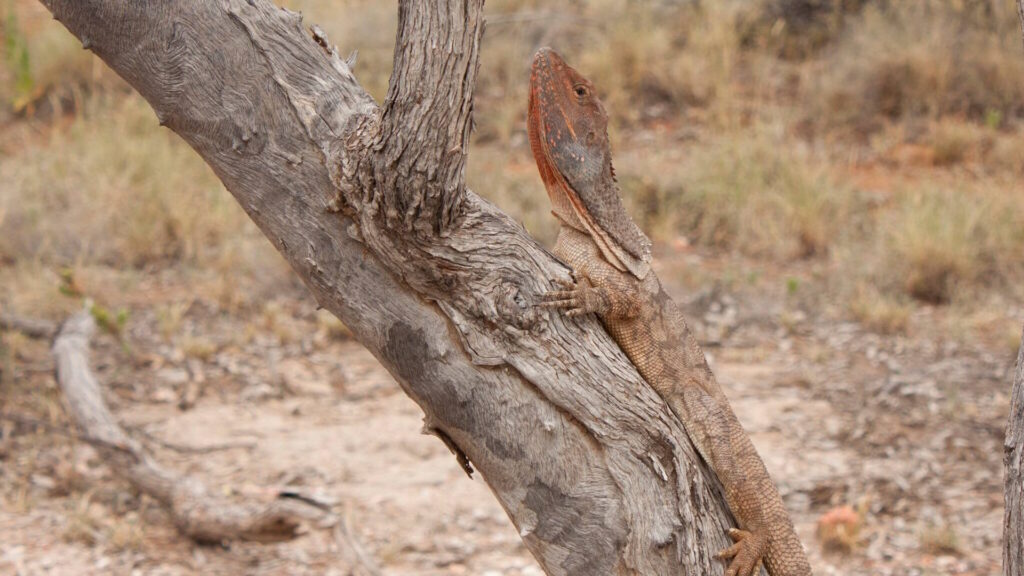
The frill’s evolution is closely tied to the specific environmental conditions of the lizards’ habitats, particularly in the case of the Australian frilled-neck lizard. These creatures primarily inhabit tropical and subtropical woodlands across northern Australia and southern New Guinea, environments characterized by abundant predator populations and extreme temperature fluctuations. The woodlands provide vertical surfaces crucial for these lizards, as they typically flee upward when threatened, running bipedally to the nearest tree before deploying their frills as a last resort if caught in the open. The coloration of frills often matches the predominant environmental palette – typically brownish or grayish on the outer surface for camouflage when folded, while inner surfaces may display bright warning colors only visible during displays. This habitat-specific adaptation demonstrates the close relationship between form and environment in evolutionary development. The lizards’ overall ecology, including their diet of insects, small vertebrates, and occasional plant matter, has shaped how and when they utilize their distinctive frills.
Threats and Conservation Status
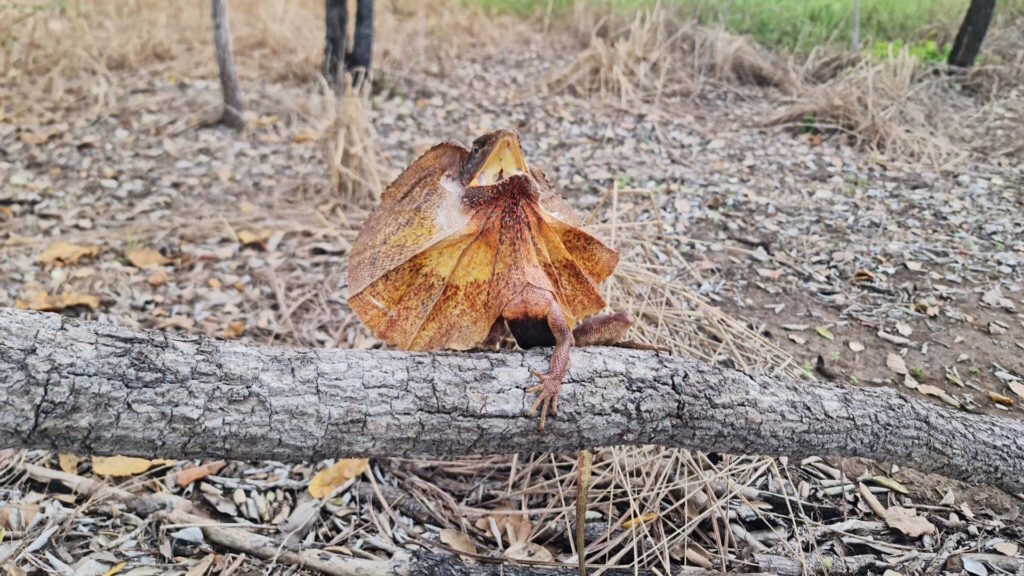
Despite their impressive defensive adaptations, frilled lizards face numerous threats in the modern world, primarily from habitat loss due to agricultural expansion, mining, and urban development across their native range. Introduced predators, particularly feral cats and foxes in Australia, have significantly impacted populations by preying on juveniles and adults alike. Climate change presents a growing concern, as these lizards’ thermoregulatory behaviors and reproductive cycles are closely tied to specific temperature patterns that are increasingly disrupted. While the Australian frilled-neck lizard is not currently listed as endangered, localized population declines have been observed in areas with intensive development or altered fire regimes. Conservation efforts include habitat preservation within national parks and wildlife reserves, along with research programs monitoring population dynamics and the impacts of environmental changes. Educational initiatives highlighting these charismatic reptiles help build public support for broader conservation measures benefiting the entire ecosystem.
Research Challenges and Future Discoveries
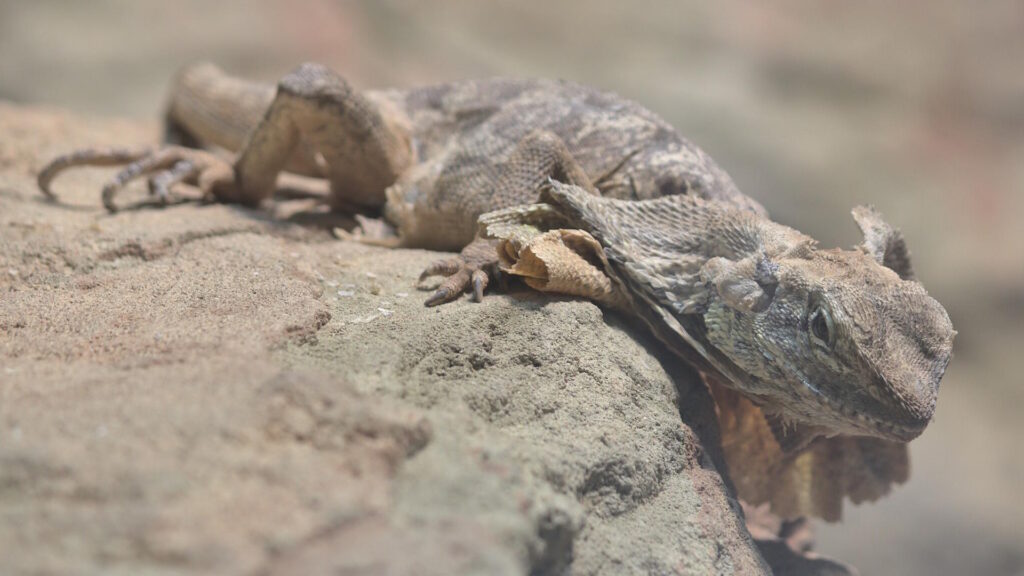
Scientific understanding of frilled lizards continues to evolve, with researchers employing new technologies to explore unanswered questions about these remarkable creatures. Recent studies using thermal imaging have provided insights into the thermoregulatory functions of the frill, demonstrating significant temperature gradients across the structure during different environmental conditions. Genetic research is uncovering the molecular pathways responsible for frill development, potentially offering insights into broader questions of evolutionary developmental biology. Behavioral ecologists are conducting field studies using remote cameras to better understand natural display frequencies and contexts without human observer effects. One particularly intriguing area for future research involves potential individual variations in frill displays and whether lizards might adjust their defensive behaviors based on experience or learning. As conservation genomics advances, researchers hope to better understand population structures and genetic diversity across the species’ range, information critical for effective long-term conservation planning.
Captive Care Considerations
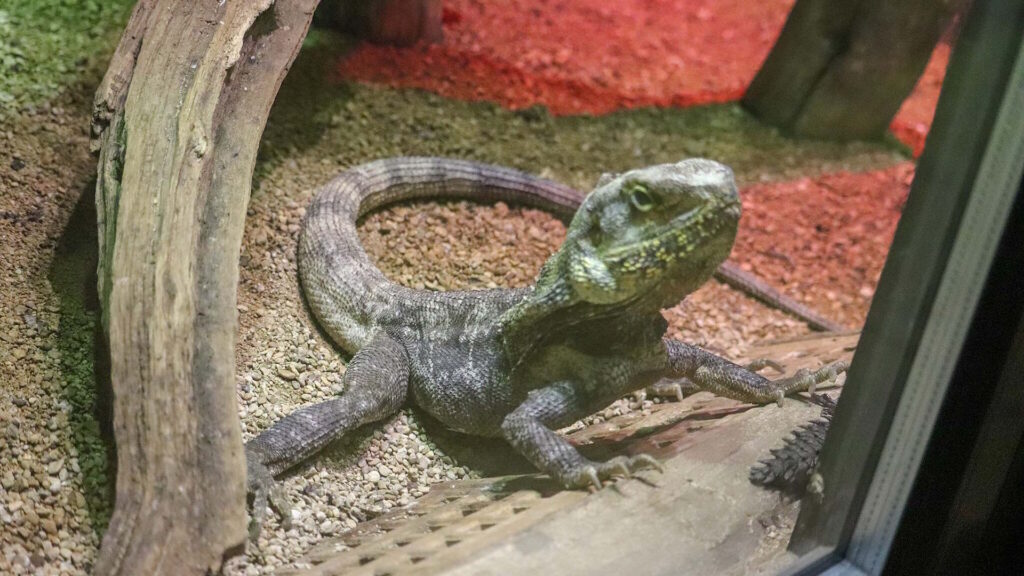
For those fascinated by frilled lizards, it’s important to note that these specialized reptiles require expert care in captivity to thrive and express their natural behaviors. Proper enclosures must be predominantly vertical to accommodate their arboreal lifestyle, with multiple climbing surfaces at various heights and temperatures. Environmental parameters must include precise temperature gradients and humidity levels mimicking their native habitats, including basking spots reaching 95°F (35°C) and cooler retreat areas. Dietary requirements include a diverse array of appropriately sized insects supplemented with calcium and vitamins, occasionally complemented with small vertebrate prey for adults. Most critically, stress factors must be minimized, as chronic stress can suppress natural behaviors including frill displays and lead to health problems. Responsible keepers recognize that observing the dramatic frill display in captivity should be rare, as frequent defensive displays indicate an animal that doesn’t feel secure in its environment. Conservation-minded enthusiasts often support field research and habitat protection rather than keeping these specialized animals as pets.
Conclusion: Nature’s Masterpiece of Form and Function
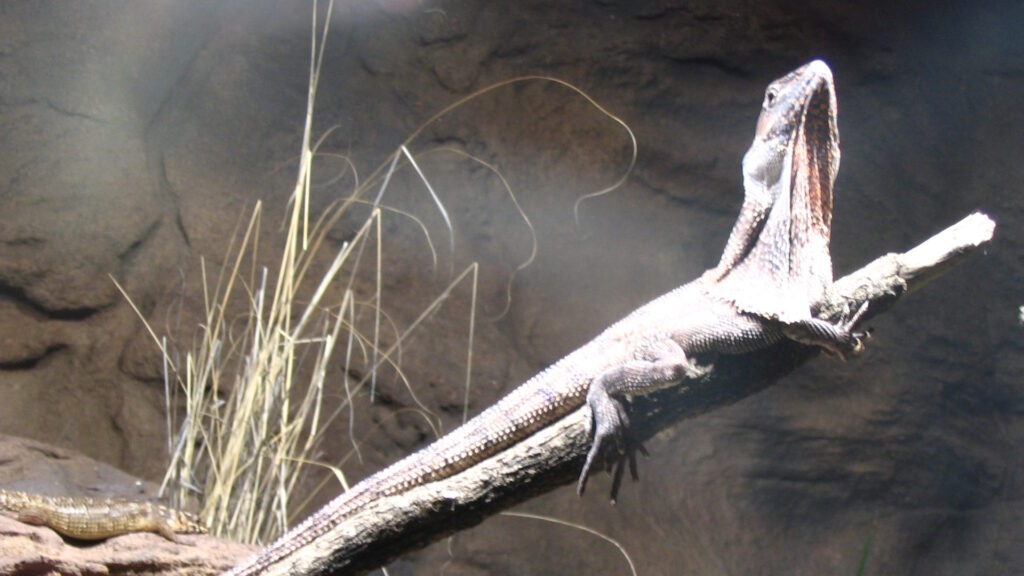
The frill of certain lizard species represents one of nature’s most remarkable examples of multifunctional adaptation, serving simultaneously as defensive tool, thermoregulatory structure, and communication device. From its evolutionary origins to its biomechanical sophistication, the lizard’s frill demonstrates how natural selection can produce elegant solutions to multiple environmental challenges. As we continue to study these fascinating creatures, they provide valuable insights into evolutionary processes, animal behavior, and ecological relationships. The frilled lizard’s iconic status in wildlife appreciation has helped draw attention to the importance of preserving natural habitats and biodiversity. In the intricate design of this seemingly simple flap of skin, we find a testament to the creative power of evolution and the complex adaptations that allow species to thrive in challenging environments through millions of years of natural history.

